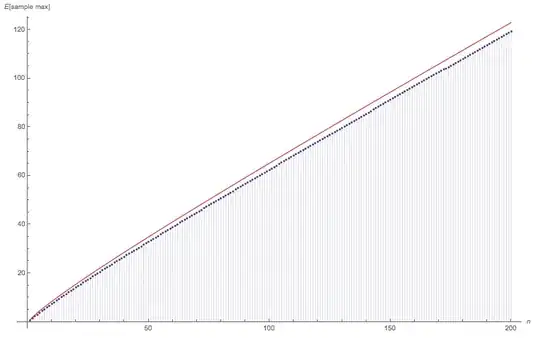Let $B_i(n,1/2)$ be independent identically distributed binomial random variables. How can one derive lower and upper bounds for the expected value of the maximum of $n$ such random variables? I am especially interested in bounds for large $n$.
In a related question, Expectation of the maximum of gaussian random variables gives an upper bound for the maximum of $n$ gaussian i.i.d $\mathcal{N}(0,\sigma^2)$ random variables of
$$\mathbb{E}[Z] \leq \sigma \sqrt{ 2 \log n} .$$
Is it possible to translate this to my particular problem and can one get a lower bound too?
